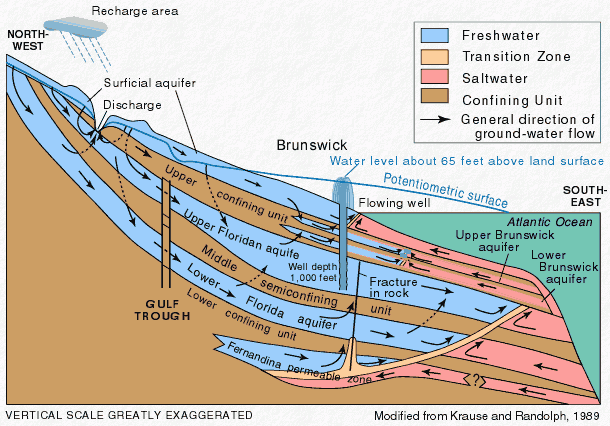artesian well

An artesian well is a well in which the water rises under hydrostatic pressure above the level of the aquifer in which it has been confined by overlying impervious strata. Often pumping is necessary to bring the water to the surface, but true artesian wells flow without assistance. The level to which water will rise in tightly cased wells in artesian aquifers is called the potentiometric surface. The word artesian comes from the town of Artois in France, the old Roman city of Artesium, where the best known flowing artesian wells were drilled in the Middle Ages.
Deep wells drilled into rock to intersect the water table and reaching far below it are often called artesian wells in ordinary conversation, but this is not necessarily a correct use of the term. Such deep wells may be just like ordinary, shallower wells; great depth alone does not automatically make them artesian wells. The word artesian, properly used, refers to situations where the water is confined under pressure below layers of relatively impermeable rock.
Example of an aquifer system with artesian wells
The diagram above shows the aquifer system near Brunswick, Georgia, as it was before development of the Floridan aquifer system in the 1880s. The aquifer system was under artesian conditions and the pressure in the aquifer system was great enough that wells flowed at land surface throughout most of the coastal area. In some areas, pressure was high enough to elevate water to multi-story buildings without pumping. The artesian water level (potentiometric surface) was about 65 feet above sea level at Brunswick. Ground water discharged naturally to springs, rivers, ponds, wetlands, and other surface-water bodies and to the Atlantic Ocean. Nowadays, ground-water pumping has caused the water level in the aquifer to decline throughout the entire coastal area, with the result that some artesian aquifers no longer have enough pressure to cause a well to naturally flow to the land surface.
